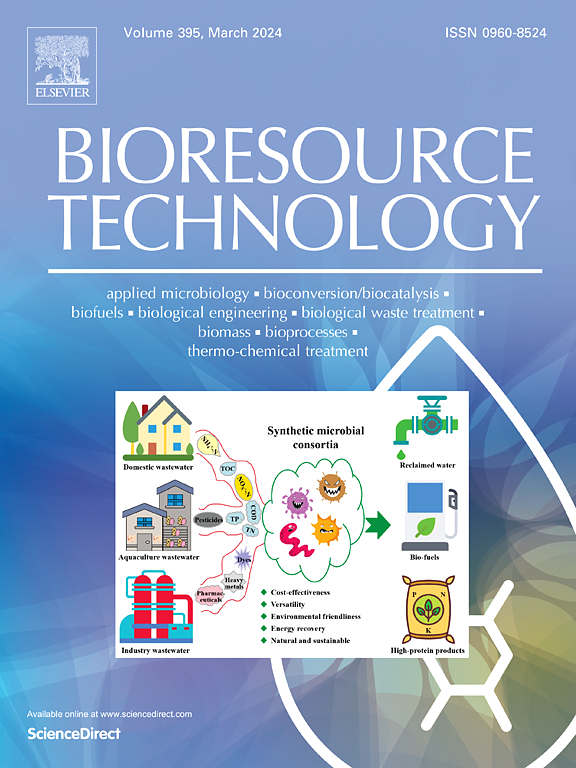Construction of an efficient enzyme-cell@material biocatalyst through the biofilm immobilization of Komagataella phaffii for continuous biocatalysis
IF 9.7
1区 环境科学与生态学
Q1 AGRICULTURAL ENGINEERING
引用次数: 0
Abstract
The ever-growing demand for cost-effective and green biocatalytic transformations has prompted the rational design and development of robust biocatalytic tools. However, transformations are hindered by limited continuous process and enzymatic instability. Here, 10 Flo family related genes in Komagataella phaffii were systematically evaluated to assess their adhesive properties. For the first time, we identified the KpFlo11C domain of BSC1p as facilitating cell aggregation on carriers, thereby enhancing the biofilm immobilization process. Furthermore, an engineered K. phaffii strain, fixing β-galactosidase on the cell surface, was constructed by optimizing the signal peptide and gene dosage, for enhancing the efficiency of enzyme targeting and anchoring, as well as the proportion of cells displaying the enzyme. Finally, the KpFlo11C domain was overexpressed in this K. phaffii cell display system to construct the enzyme-cell@material biocatalyst, which exhibited robust continuous production of galacto-oligosaccharides (GOS) at a rate of 8.16 g/L/h in a 6-L fermenter. The development of this enzyme-cell@material biocatalyst, which offers a highly efficient, stable, low-cost, and simplified biocatalytic process, provides a direction for the application of other yeasts in large-scale industrial continuous production.

求助全文
约1分钟内获得全文
求助全文
来源期刊

Bioresource Technology
工程技术-能源与燃料
CiteScore
20.80
自引率
19.30%
发文量
2013
审稿时长
12 days
期刊介绍:
Bioresource Technology publishes original articles, review articles, case studies, and short communications covering the fundamentals, applications, and management of bioresource technology. The journal seeks to advance and disseminate knowledge across various areas related to biomass, biological waste treatment, bioenergy, biotransformations, bioresource systems analysis, and associated conversion or production technologies.
Topics include:
• Biofuels: liquid and gaseous biofuels production, modeling and economics
• Bioprocesses and bioproducts: biocatalysis and fermentations
• Biomass and feedstocks utilization: bioconversion of agro-industrial residues
• Environmental protection: biological waste treatment
• Thermochemical conversion of biomass: combustion, pyrolysis, gasification, catalysis.
 求助内容:
求助内容: 应助结果提醒方式:
应助结果提醒方式:


